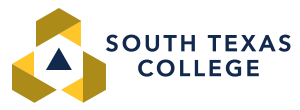Strategic Goals and Directions
Goal 1 Champion Student Success

Ensure every student has the support and resources needed to succeed from entry to completion.
Strategic Direction 1:
Remove Barriers to Educational Goals
- Establish Jaguar Resource Centers to support students with essential needs such as food, housing, transportation and mental health.
- Expand tuition assistance programs and pursue opportunities to lower cost of attendance.
Strategic Direction 2:
Strengthen Student Engagement and Campus Culture
- Implement Caring Campus best practices across all campuses, departments and service areas.
- Expand welcoming campus events and cocurricular programs that foster connection and belonging.
- Develop a coordinated student communication and holistic support strategy that combines technology and personal outreach to guide and support students through their educational journey.
Goal 2 Develop, Align and Optimize Educational Programs

Deliver innovative, future-focused programs that equip students with the skills and credentials needed for success.
Strategic Direction 1:
Innovate and Expand Learning Opportunities
- Design learning opportunities, credentials and degrees that address workforce demands and integrate emerging technologies, including Artificial Intelligence.
- Expand co-curricular and extracurricular programming to enrich student learning and engagement.
Strategic Direction 2:
Optimize Existing Programs
- Standardize and streamline program review to ensure quality, innovation and labor market alignment.
- Leverage learning outcomes data for program and curricula improvement strategies.
- Increase access to work-based learning through partnerships offering internships, apprenticeships, clinicals and hands-on experience.
- Diversify instructional modalities to support flexibility, engagement and access for all learners.
Strategic Direction 3:
Enhance Student Transitions Across Education Pathways
- Promote program pathway maps that support student goal setting, career planning, completion and transfer.
- Strengthen alignment of educational offerings across credit, dual enrollment, noncredit and transfer pathways to support stackable credentials and seamless advancement.
- Accelerate college readiness through targeted support and high-impact teaching practices.
Goal 3 Maximize Institutional Effectiveness and Efficiency

Align resources, talent and technology to ensure operational excellence and mission-driven decision-making.
Strategic Direction 1:
Align Resources and Operations to Advance Institutional Goals
- Coordinate planning and project management across departments to align resources with strategic priorities.
- Enhance internal communication to support collaboration and transparency across the institution.
- Exercise fiscal responsibility by prioritizing funding for strategic goals and strengthening the College’s long-term financial stability.
Strategic Direction 2:
Leverage Technology and Data
- Integrate AI and emerging technologies to streamline operations and strengthen decision-making.
- Foster a culture of continuous improvement by embedding actionable data in planning and evaluation.
Strategic Direction 3:
Develop and Retain Institutional Talent
- Provide meaningful professional development and growth opportunities for faculty and staff across all roles.
- Invest in career and personal development for faculty and staff to create an environment for them to thrive.
Goal 4 Cultivate Community Engagement

Strengthen relationships and partnerships with community to build trust, visibility and shared prosperity.
Strategic Direction 1:
Enhance Visibility and Reputation of the College
- Expand public awareness through storytelling, media outreach and community-facing events that promote civic engagement, culture and access to learning.
- Celebrate, preserve and promote college identity through the history and mission of South Texas College.
Strategic Direction 2:
Deepen Strategic and Regional Partnerships
- Strengthen collaboration with educational entities, employers, workforce boards, civic and governmental leaders to advance regional goals.
- Cultivate alumni and retiree associations to foster connection, pride and long-term support.
Strategic Direction 3:
Grow External Investment and Philanthropic Support
- Increase and align external funding with institutional goals and strengthen donor engagement.
